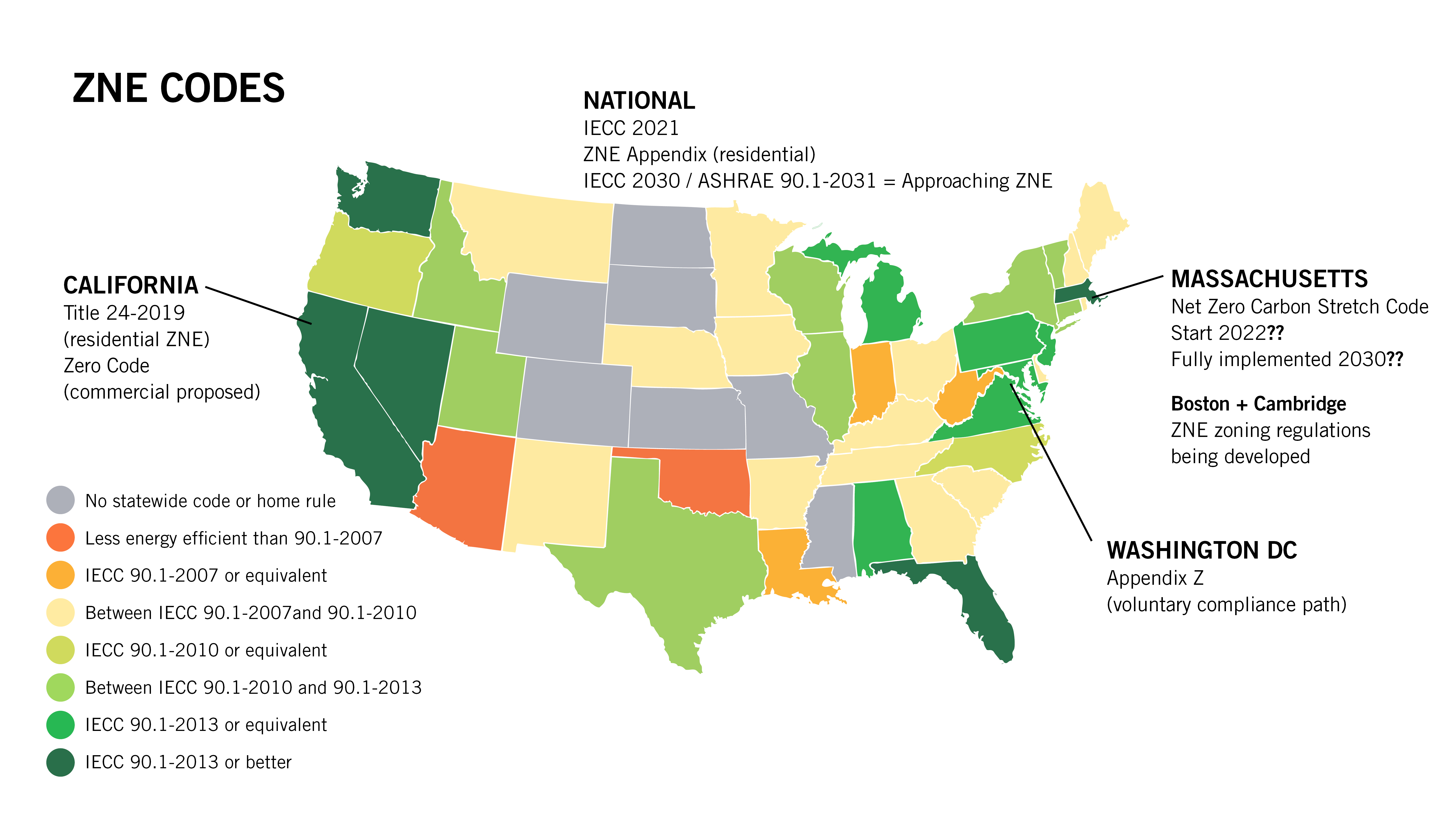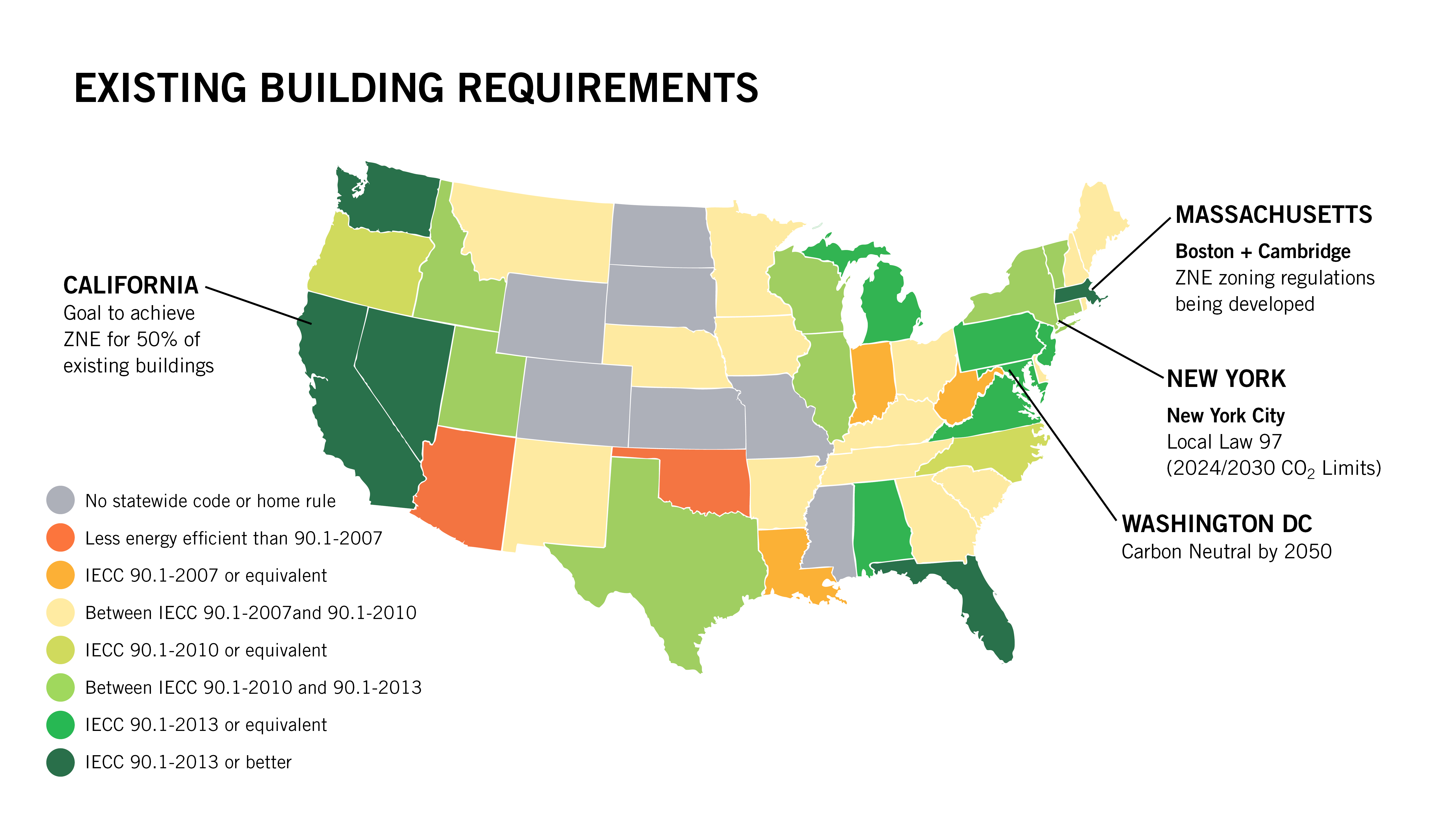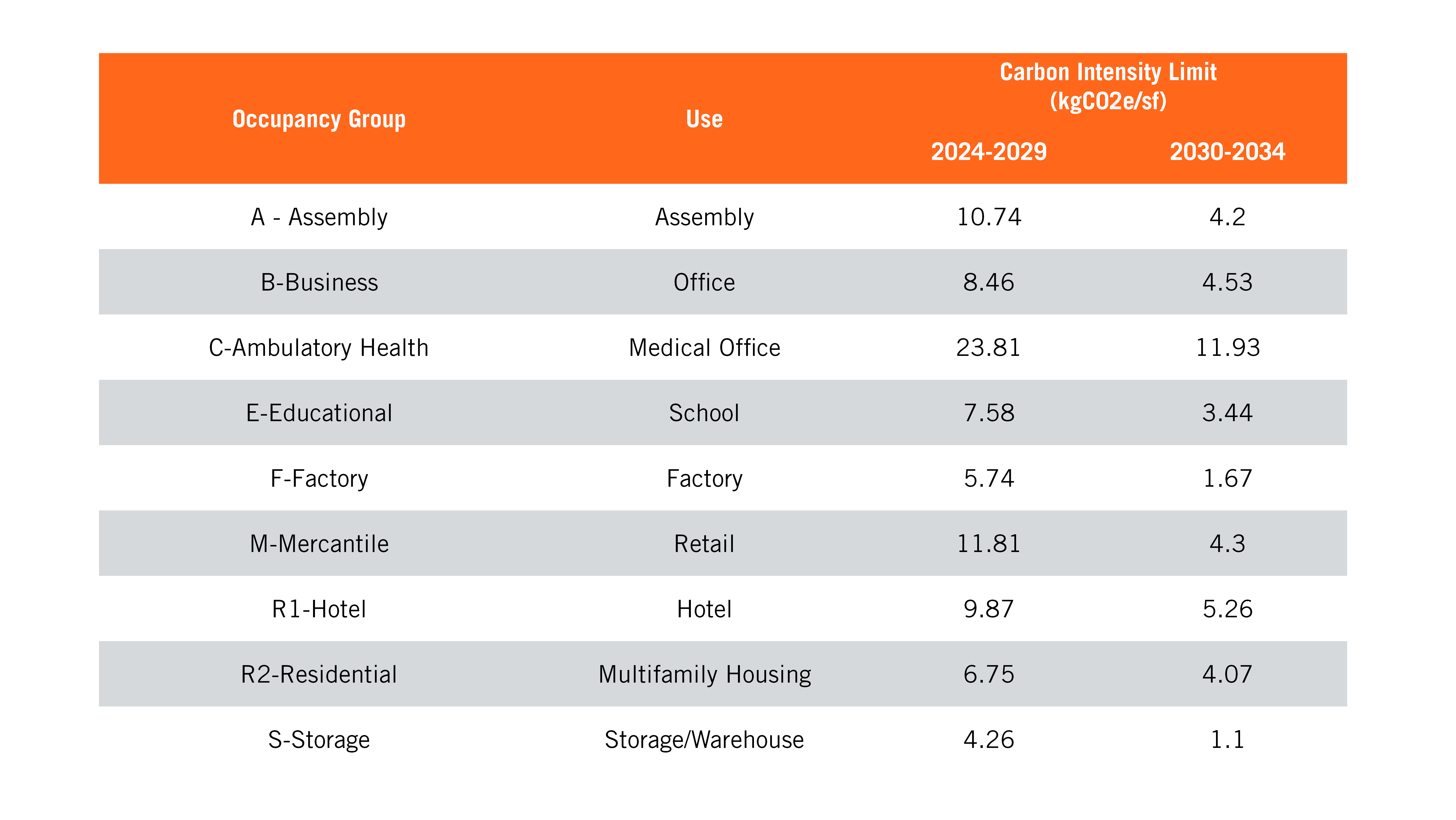Owners are not only designing net zero buildings to fight climate change, save on utility bills and take advantage of zoning and financial incentives, in some places is or will soon be mandatory. Net zero building codes are going into effect in places like California, Washington DC, New York City, and Massachusetts.
IECC and ASHRAE 90.1 are the predominant energy codes. With each new release, these standards increase the stringency of the requirements. The latest version of IECC (2021) includes a Zero Net Energy appendix for residential. IECC 2030 and ASHRAE 90.1-2031 are anticipated to require net zero performance. You can learn more about the latest energy code for each state here: https://www.energycodes.gov/status-state-energy-code-adoption
But, you don’t have to wait until 2030 for net zero codes to go into effect. California already requires all new residential low-rise single-family and multifamily to approach net zero energy, including extremely low energy consumption and a solar PV array (unless an exception is met, such as poor access to sunlight). California is also in the process of proposing a net zero code for commercial buildings. Washington DC has a voluntary net zero energy code compliance path that will likely move toward becoming mandatory in the future. Massachusetts is in the process of drafting a Net Zero Stretch Code. BR+A is the co-author and signatory of the letter in support of the MA Net Zero Stretch Code. Other MA-based firms and individual professionals can sign on here: https://usgbcma.org/net-zero-stretch-code-letter/

Net zero codes are not necessarily as big a leap as one might think. For example, the Zero Code is designed to be a model net zero code that can be adopted or adapted by each state. California’s draft net zero commercial code is based on this model. In a nutshell, the requirements are actually quite simple: comply with the latest version of ASHRAE 90.1 (currently 2016) and procure renewable energy equivalent to the anticipated energy consumption. Both on-site and off-site renewable energy qualify. They have even developed a means to address the different ‘classes’ of renewable energy sourcing, by requiring multipliers be applied to different renewable energy source types. Learn more about the Zero Code and Zero Code for California here: https://zero-code.org/
Other net zero codes are a little more aggressive, such as DC Appendix Z, which incorporates some Passive House requirements such as limiting annual heating and cooling demand. DC Appendix Z also does not allow combustion for provision of thermal energy to the building. Here are additional resources on net zero codes https://newbuildings.org/code_policy/zero-codes/
With an increased focus on sustainability, several governing authorities have begun to pass regulations related to building carbon emissions, and many more are expected to come. California, Massachusetts, Washington DC, and New York are the first territories to pioneer with building codes that limit building emissions. New York City passed the most stringent regulations of any U.S. city, titled Local Law 97 (LL97).

NYC Local Law 97
On May 18th, 2019, New York City Council passed Local Law 97 as the centerpiece of the Climate Mobilization Act to tackle building emissions with the final objective of reducing the city’s emissions by 80% by the year 2050 from a 2005 baseline. The law attempts to reduce carbon emissions by setting whole-building carbon intensity limits starting in 2024. Its impact will extend to over 57,000 buildings across the city and, as one of the most ambitious laws in the world to tackle emissions from existing buildings, its initial goal is to reduce building-based emissions by 40% by 2030.
The change in law is expected to force the retrofit market to expand 2.5x during the first compliance period (2020-2024) and up to 13x during the second compliance period (2024-2030) relative to 2018 by annual project value. A ~$20B retrofit market is being forecasted for 2030 in NYC. In total, 1.4B SF of residential area and 1.1B SF of commercial area will need to be retrofitted to meet LL97 standards.
If a building cannot reduce carbon emissions to LL97 levels, there are three (3) primary options to remain compliant. The first option is to purchase renewable energy credits. This renewable energy must be generated in NYC or be entering the NYC grid. The second option is to purchase greenhouse gas offsets. Lastly, carbon credits can be purchased from buildings which surpass carbon goals.
If a building remains noncompliant, there will be a maximum fine of $0.50 per SF per month for failure to file a report. Fines for exceeding emissions limits amount to $268 per metric ton over the cap. Falsification of emissions is a misdemeanor and is accompanied by a $500,000 fine. Exceptions can be granted for financial hardships and practical constraints.
Reduction requirements for healthcare facilities and nonprofit hospitals differ from commercial buildings. Healthcare facilities and hospitals are expected to reduce emissions by 15% from 2018 levels during the first compliance period and an additional 15% for the second compliance period so long as their application is submitted by July 2021.
What are the limits?
Carbon emissions intensity limits vary by building type, and are measured in kg of CO2e per square foot. The building category is determined based on the Building Code occupancy groups, and mixed-use buildings will have limits that reflect the combination of the different occupancy groups based on the square footage that falls within each category. All buildings with over 25,000 gross square feet are required to comply, with the exception of rent-regulated units.
Below are the 2024 to 2030 carbon emission limits for the different building categories.

What can I do to reduce my carbon emissions?
While it seems like there is plenty of time before the limits become effective in 2024, all building owners should begin to develop a long-term energy strategy to make sure they meet the expectations. This process tends to require time, and starting early will allow for a wider variety of possible solutions. From simpler operational changes to larger capital improvements, different solutions can be made available depending on the type and current emission level of the building. HVAC systems, lighting, sensors, and controls are some of the areas that can be targeted to lower carbon emissions. Starting with a full energy audit will allow building owners to identify where the main investments should be made, and hiring a licensed consultant will help you achieve this.